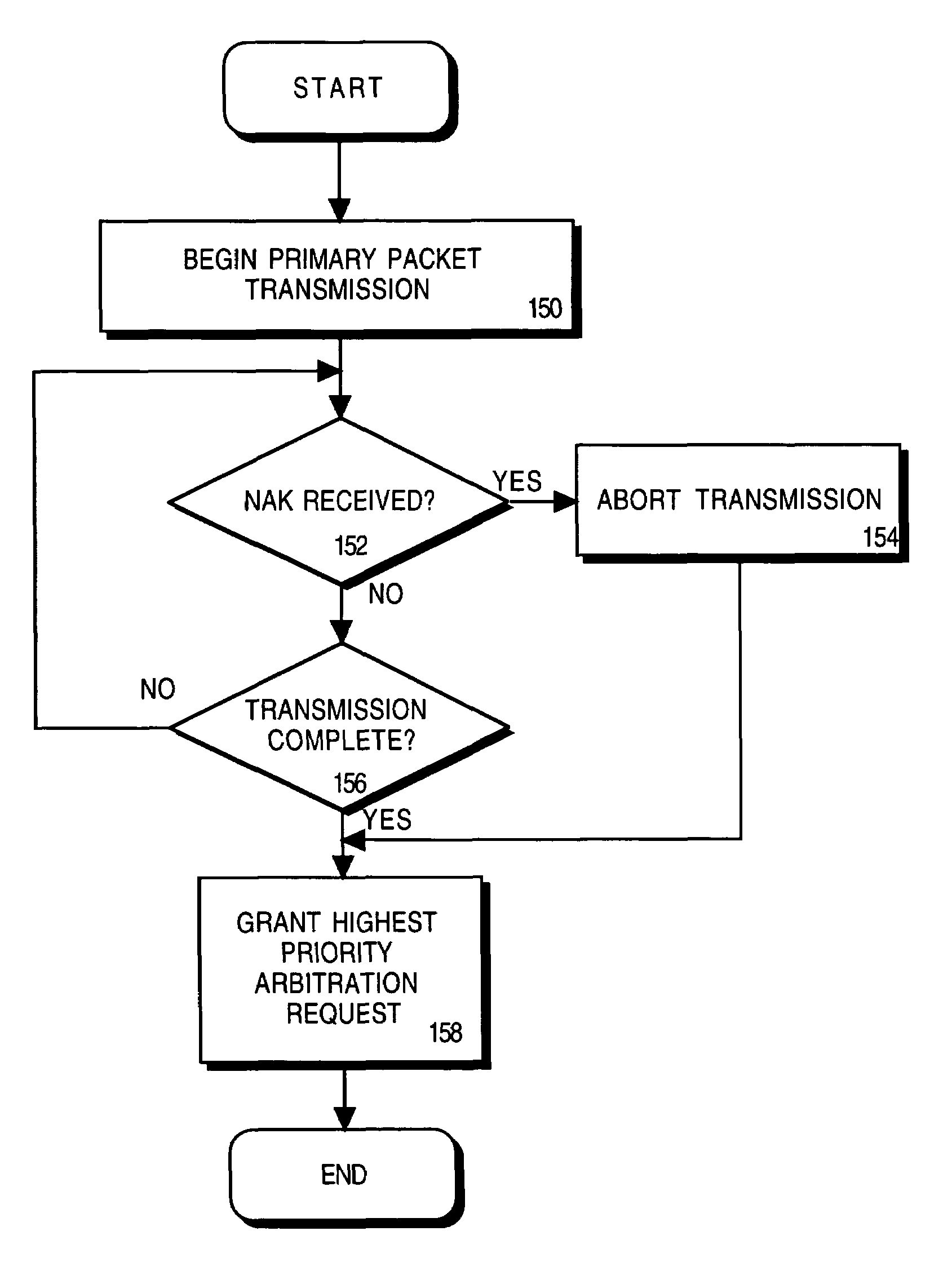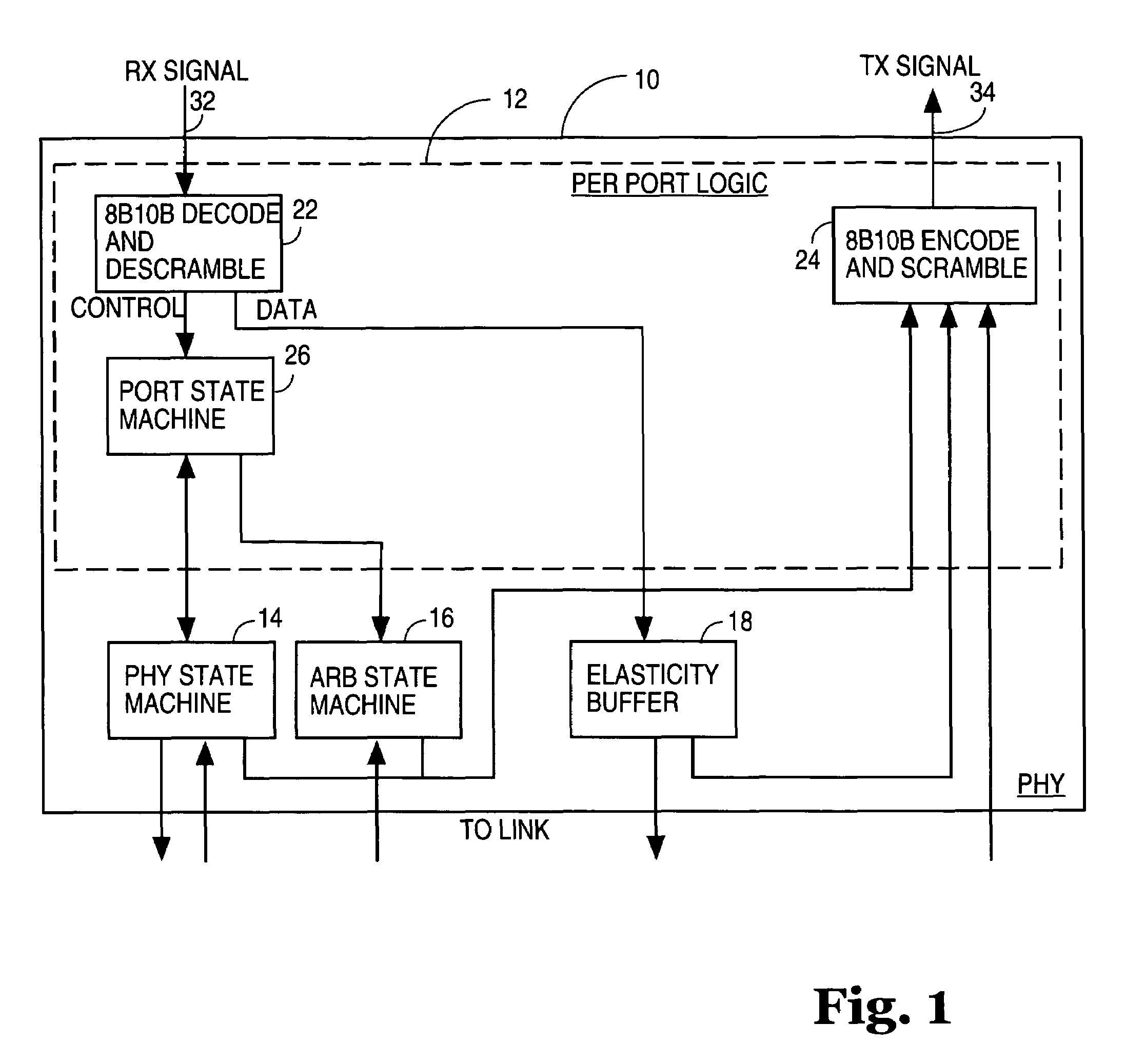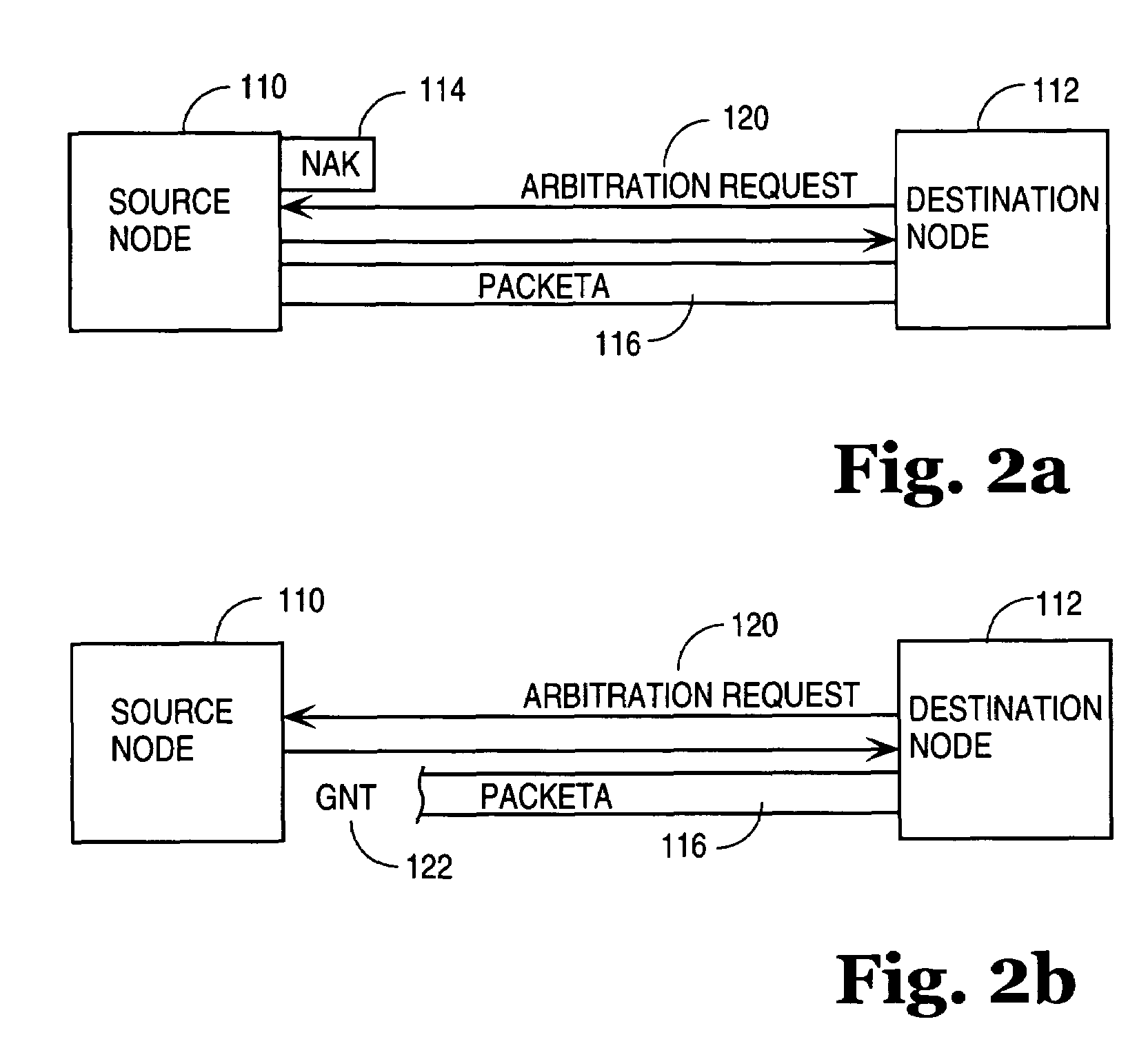Early acknowledgement of primary packets
a primary packet and early acknowledgement technology, applied in the field of data transfer systems, can solve the problems of scarce bus bandwidth and no other useful work on the bus, and achieve the effect of improving bus efficiency
- Summary
- Abstract
- Description
- Claims
- Application Information
AI Technical Summary
Benefits of technology
Problems solved by technology
Method used
Image
Examples
Embodiment Construction
[0014]A source node sends a primary packet toward a destination node along a full duplex bus. If the destination node identifies that it cannot receive the packet, it sends an acknowledgment (ACK) packet in the opposite direction along the full duplex bus towards the source node. The ACK packet contains a code indicating that the packet could not be successfully accepted and should be retried later. The 1394a Standard defines acknowledge codes which stimulate a retry including ack_busy_*; ack_tardy; and ack_*_error. As used herein, an ACK packet containing such a code, or any other signal that a data transmission will not be accepted and should be retried is termed a “NAK.” Upon receiving the NAK, the source node aborts packet transmission of the primary packet which by virtue of the NAK has been identified as futile. Accordingly, the bandwidth which would have otherwise have been used for the futile packet transmission can be reclaimed and used for some other purpose.
[0015]Now refe...
PUM
 Login to View More
Login to View More Abstract
Description
Claims
Application Information
 Login to View More
Login to View More - R&D
- Intellectual Property
- Life Sciences
- Materials
- Tech Scout
- Unparalleled Data Quality
- Higher Quality Content
- 60% Fewer Hallucinations
Browse by: Latest US Patents, China's latest patents, Technical Efficacy Thesaurus, Application Domain, Technology Topic, Popular Technical Reports.
© 2025 PatSnap. All rights reserved.Legal|Privacy policy|Modern Slavery Act Transparency Statement|Sitemap|About US| Contact US: help@patsnap.com



